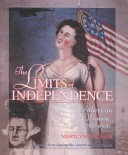Young Oxford History of Women in the United States
1 primary work
Book 3
The second half of the 18th century saw a handful of English colonies transform themselves into a nation. This process involved not only a revolution against the British crown but also the uniting of a diverse population; in addition to the English and Africans who made up the bulk of the population, people from continental Europe had to become willing to join in the creation of the new republic. Tradition dictated that the independent male citizen was the most important actor in this drama, but women's contributions to the war effort and support of the political ideals of the era were essential to the survival of the new United States.
The first obligation of a women--to God and to country--was to marry and bear children. The lives of the 18th-century white women were filled with the numerous demands of child care and housekeeping. African-American women faced the same demands, but found their ability to care for their families sharply limited by their lives as slaves, while Native American women often saw their families and tribes destroyed when whites seized their lands in the name of the federal government. But there were other forces at work during this turbulent period as the community of women addressed issues of educational reform, the abolition of slavery in the North and renewed embrace of it in the South, voting rights, religion, the rise of prominent women intellectuals, and the ever-changing relationships between women and men.
The poet Phillis Wheatley, the writer and educator Susanna Rowson, and other women--both well known and unsung--fill the pages of The Limits of Independence. The book looks at the traditional patterns of women's lives during the time of the American Revolution and charts the new directions to come as women help to carve a new nation "dedicated to the proposition that all men are created equal."
The first obligation of a women--to God and to country--was to marry and bear children. The lives of the 18th-century white women were filled with the numerous demands of child care and housekeeping. African-American women faced the same demands, but found their ability to care for their families sharply limited by their lives as slaves, while Native American women often saw their families and tribes destroyed when whites seized their lands in the name of the federal government. But there were other forces at work during this turbulent period as the community of women addressed issues of educational reform, the abolition of slavery in the North and renewed embrace of it in the South, voting rights, religion, the rise of prominent women intellectuals, and the ever-changing relationships between women and men.
The poet Phillis Wheatley, the writer and educator Susanna Rowson, and other women--both well known and unsung--fill the pages of The Limits of Independence. The book looks at the traditional patterns of women's lives during the time of the American Revolution and charts the new directions to come as women help to carve a new nation "dedicated to the proposition that all men are created equal."
